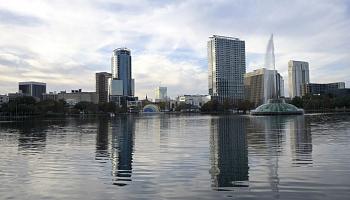Diverse group of cities have highest rates of gay households
ORLANDO, Fla. — Once known for singer Anita Bryant’s anti-gay rights campaign and a ban on gay and lesbian adoptions, Florida is now home to two metro areas with among the highest concentrations of gay and lesbian coupled households in the U.S., according to a new report released by the U.S. Census Bureau.
Orlando and Miami had the fourth and sixth highest percentages respectively of same-sex coupled households in the U.S., according to the report released this week using data from the bureau’s 2019 American Community Survey.
San Francisco, Portland and Seattle topped the list. Austin was No. 5 and Boston came in at No. 7. But they were joined in the top 10 by some unexpected metro areas like Baltimore, Denver and Phoenix. Noticeably absent were three of the nation’s largest metros: New York, Los Angeles and Chicago. Though they have some of the nation’s most visible LGBTQ communities, the vastness of their metro areas dilutes the concentration.
The appearance of these metros on the list shows that tolerance isn’t limited to large coastal cities, gay rights advocates said.
“You often think of LGBTQ people in large cities like San Francisco, but we’re everywhere,” said Jeremy LaMaster, executive director of FreeState Justice, a Baltimore-based LGBTQ advocacy organization for Maryland.
The report focused on same-sex couples, both married and unmarried, and not gays and lesbians who are single. About 1.5 percent of all coupled households nationwide were same sex. The cities on the top 10 list ranged in concentration from San Francisco’s 2.8 percent to Baltimore’s 2 percent.
In the District of Columbia, which was categorized along with states in the report, 7.1 percent of coupled households were same sex.
In Florida, acceptance of LGBTQ communities has been driven at the local level, with passage of human rights ordinances, fast-growing populations from all over the world and gay-friendly companies from the hospitality and entertainment industries, said Nadine Smith, executive director of Equality Florida, an LGBTQ advocacy group.
While Orlando already had a visible gay community with out elected officials and workforces like Disney World with large numbers of gays and lesbians, the collective grief from the massacre at the gay Pulse nightclub in 2016 helped push that acceptance into more conservative corners of civic life such as local churches.
“Miami is a port city and Orlando is the epicenter of amusement parks and hospitality, so it makes perfect sense,” Smith said of the high concentrations of same sex households. “The cities have led the way for sure, rebuilding Florida’s image from a really hateful history.”




